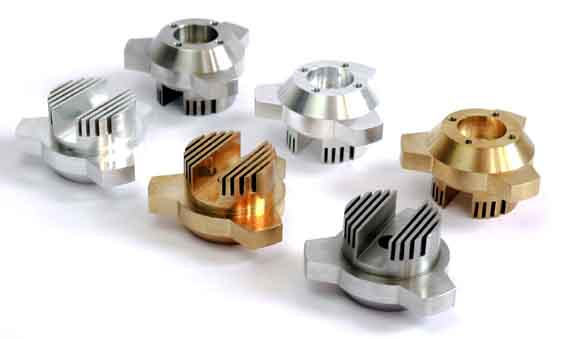CNC-bearbejdning er blevet en vigtig søjle i fremstillingsindustrien. Denne form for forarbejdning bruges i flere og flere produkter (for eksempel, CNC drejning og CNC fræsning, gravering, skæring og boring). Selvom mange mekanikere er vant til denne form for bearbejdning, ikke alle kender logikken bag det. Sammenlignet med andre former for bearbejdning, de vigtigste fordele ved at bruge CNC-bearbejdning er som følger:
1. More automation than usual
As the name suggests-CNC stands for Computer Numerical Control-this form of processing relies heavily on computer control. This means a higher level of automation, which is the best solution for high-precision parts.
Compared with traditional production methods, the main differences and benefits of using CNC machining are:
More machining processes are automated, reducing the occurrence of human error and meeting people’s demand for higher precision.
The main function of machining is to be able to create parts of various shapes from a block of plastic or metal. Although traditional machining can achieve these goals, the automation used in CNC machining makes machining more efficient, faster, higher production speed, and less error, making CNC machining reduce the cost of many companies.
2. The same type of CNC machining
Modern CNC machine tools are suitable for various cutting methods. CNC turning processing makes it possible to manufacture complex external and internal geometries. For eksempel, CNC drejning og CNC fræsning. In the CNC turning process, raw materials are processed with the development of processing, making it possible to manufacture “complex external and internal geometric figures, including the generation of various threads”.
CNC milling is better for manufacturing holes, riller, and repeated motions to create complex three-dimensional shapes. Milling is versatile, easy to set up repetitive motions, and is often used to make molds for plastic injection molding.
3. Meet all your needs
There is no tool in the manufacturing industry that can handle all manufacturing needs, but CNC is the closest. It can create curves and angles in materials that were once flat and smooth. It can add grooves and threads to create a locking mechanism. It can stamp and engrave, cut and drill, and add texture and contour. Since it is run by a computer program, you can customize it to do almost anything you can imagine.
The computer programming process uses computer-aided design (CAD) to create a model of the final product. As the process progresses, this is a rough product draft. It can also identify any problems in the design. Then take a picture of the prototype, which will create a copy and enter it into the machine.
4. Security
Although the operator plays an important role in CNC machining, the operator does not operate on the machine with his hands, but on the computer. This creates a safer working environment for everyone and reduces the occurrence of workplace accidents.
This is particularly important because workers have to bear the repeated manual labor in the past. CNC machining ensures that the products produced are consistent to meet quality control guidelines. Human error and lack of sleep are a common hidden danger, which can lead to accidents. There is no need to worry about accidents when using CNC machining.
5. Convenient and fast
Because the CNC machining process is efficient and computer-led, it is easy to mass produce. You only need to make multiple machines run on the same program. For many companies, how to scale up while maintaining good profit margins is a challenge. Numerical control processing has a storage function, so there is no need to worry about reloading the program every time, and there is no need to re-enter commands every time a product is produced. The many benefits of CNC machining make it the best choice for manufacturers.

Prisfordelen ved CNC-bearbejdning masseproduktion
 English
English العربية
العربية 中文(漢字)
中文(漢字) Čeština
Čeština Dansk
Dansk Nederlands
Nederlands Suomi
Suomi Français
Français Deutsch
Deutsch Italiano
Italiano 日本語
日本語 ಕನ್ನಡ
ಕನ್ನಡ 한국어
한국어 Português
Português Русский
Русский Slovenčina
Slovenčina Español
Español Svenska
Svenska Türkçe
Türkçe

